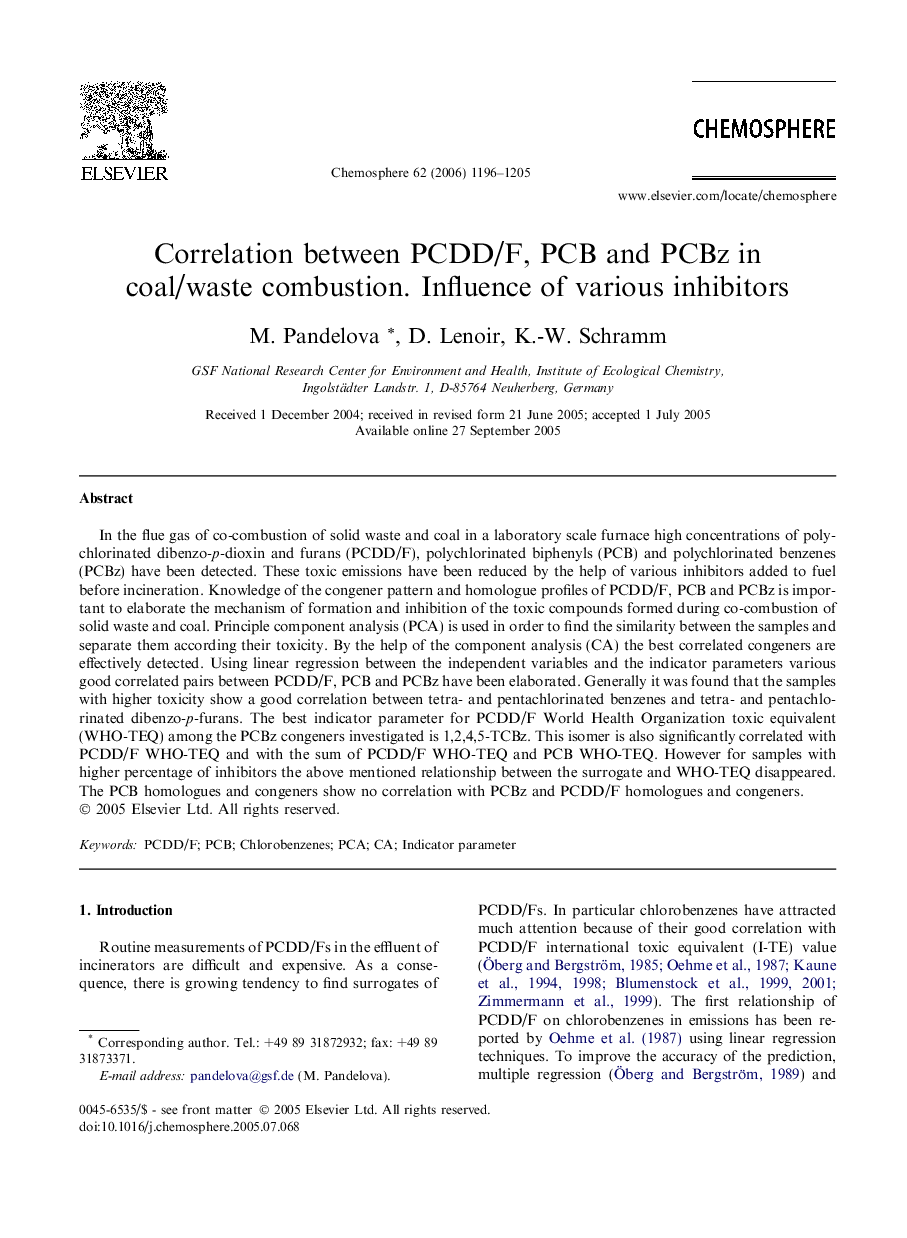| Article ID | Journal | Published Year | Pages | File Type |
|---|---|---|---|---|
| 4416885 | Chemosphere | 2006 | 10 Pages |
In the flue gas of co-combustion of solid waste and coal in a laboratory scale furnace high concentrations of polychlorinated dibenzo-p-dioxin and furans (PCDD/F), polychlorinated biphenyls (PCB) and polychlorinated benzenes (PCBz) have been detected. These toxic emissions have been reduced by the help of various inhibitors added to fuel before incineration. Knowledge of the congener pattern and homologue profiles of PCDD/F, PCB and PCBz is important to elaborate the mechanism of formation and inhibition of the toxic compounds formed during co-combustion of solid waste and coal. Principle component analysis (PCA) is used in order to find the similarity between the samples and separate them according their toxicity. By the help of the component analysis (CA) the best correlated congeners are effectively detected. Using linear regression between the independent variables and the indicator parameters various good correlated pairs between PCDD/F, PCB and PCBz have been elaborated. Generally it was found that the samples with higher toxicity show a good correlation between tetra- and pentachlorinated benzenes and tetra- and pentachlorinated dibenzo-p-furans. The best indicator parameter for PCDD/F World Health Organization toxic equivalent (WHO-TEQ) among the PCBz congeners investigated is 1,2,4,5-TCBz. This isomer is also significantly correlated with PCDD/F WHO-TEQ and with the sum of PCDD/F WHO-TEQ and PCB WHO-TEQ. However for samples with higher percentage of inhibitors the above mentioned relationship between the surrogate and WHO-TEQ disappeared. The PCB homologues and congeners show no correlation with PCBz and PCDD/F homologues and congeners.
